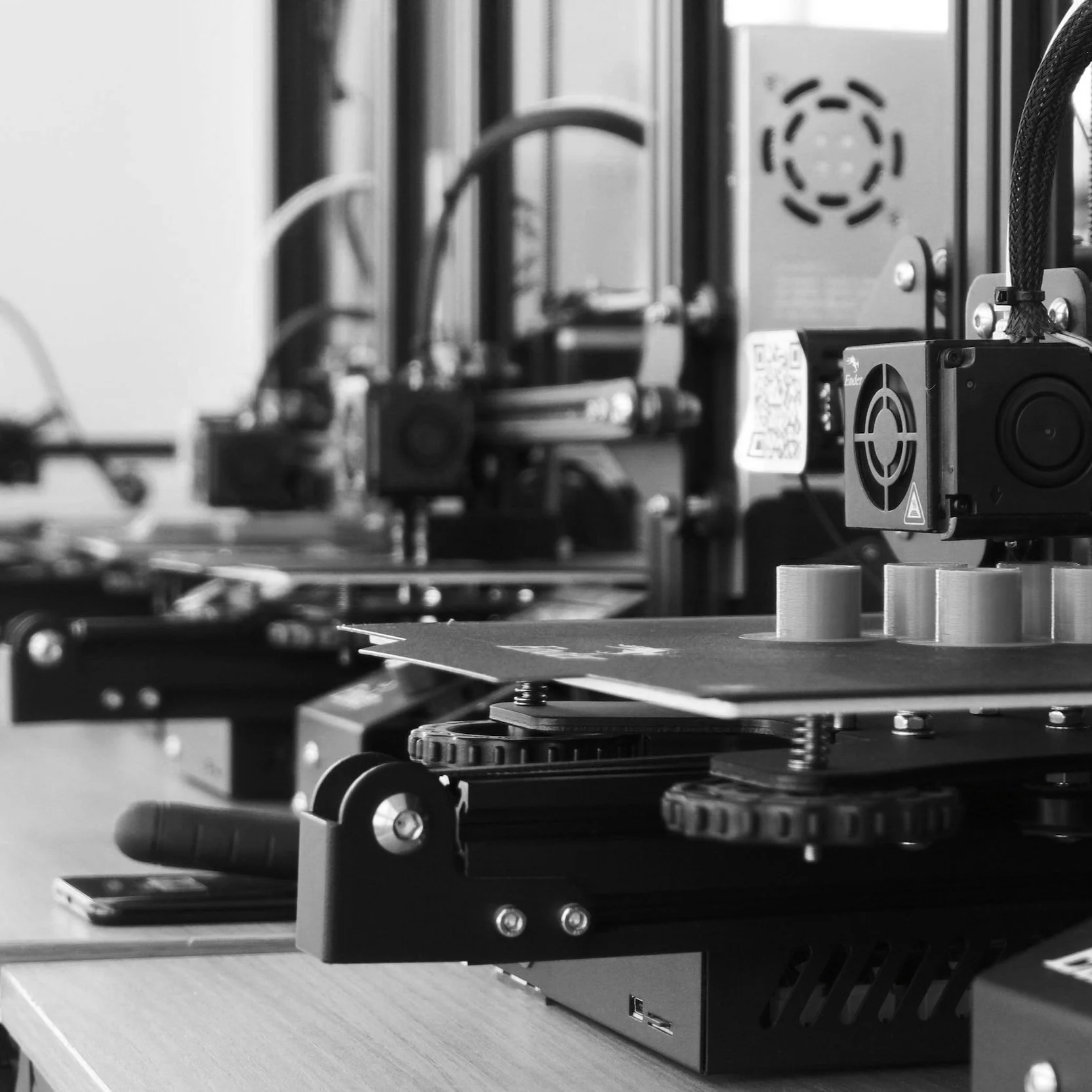ACRYLIC
MATERIAL OVERVIEW
Acrylic plastics (polymethyl methacrylate), a renowned plastic type globally, are notable for their versatility, durability and cost-effectiveness. This is why acrylic poly is often used as a glass substitute. They have a wide range of applications in various significant industries, such as medicine, engineering, retail and many more.
Chemical Name: Polymethyl Methacrylate
Common/Trade Names: Perspex®
Abbreviation: PMMA
Properties (Colour): Clear, opaque as well as a range of colours and tints
Machining: Due to acrylics brittle nature care has to be taken in order to achieve fine finishes without chipping.
Types: Extruded and Cast (preferred when machining and polishing).
Chemical Resistance: Unaffected by aqueous solutions of most laboratory chemicals, by detergents, cleaners, dilute inorganic acids, alkalies, and aliphatic hydrocarbons. However, acrylics are NOT recommended for use with chlorinated or aromatic hydrocarbons, esters, or ketones.
KEY INFORMATION
-
Material clarity
Lighter and stronger than glass
Can be bent and formed
Great for displays
UV resistant
Exceptionally long-life span
Optically clear
Good scratch resistance
-
Machine Parts, Covers & Guards
Framing / Model making
Shop fitting / Shelving
Manifolds
Signage
Parts for the medical industry
Document Covers
Architectural Applications
Glazing
Sight Glasses
Point of Purchase / Retail / Exhibition displays
Light Fittings/Roof Lighting
-
Components
Rod
Sheet
Tube
Block
DOWNLOADS
KEY BENEFITS OF ACRYLIC
Features
Among the unique features of acrylic plastics are the following:
Light transmittance of 92%, making it crystal clear.
30 times stronger than glass and more lightweight.
Common Names for Acrylic Sheets
The chemical name for acrylic is polymethylmethacrylate, or PMMA for short. Manufacturers call it Plexiglass or Perspex. It’s also known as acrylic sheet, acrylic plastics, acrylic plastics and acrylic glass. It also comes in various product names of our competitors, such as Versato, Deglas, Perspex, Paraglas and many more.
Wide Range of Acrylic Plastics Applications
Acrylic plastics have various applications in different sectors due to their workability and versatility. These include but are not limited to the following applications:
Machine Parts, Covers & Guards—Suitable for 3D printer casings, pet enclosures
Framing / Model making—Used as moulds for epoxy resin and as image protectors
Shop fitting / Shelving—Used as furniture shelves
Manifolds—For efficient integrated circuitry, valving and tubing
Signage—Acrylic stands for the protection of signage
Parts for the medical industry—Used in incubator enclosures, syringes, cuvettes, and more
Document Covers—For office use as paper holders and other office materials
Architectural Applications—Used as architectural decorative screens and wall panels
Glazing—Used in canopies and walkways for clarity and durability; paint glazing
Sight Glasses—Used in tank trucks and tank flanges for fuel-grade viewing
Point of Purchase / Retail / Exhibition displays—Used as cases for various retail and product displays
Light Fittings/Roof Lighting—Natural lighting using acrylic roofing and light diffusion
Acrylic Plastic Types
PMMA Melbourne has two main types available in the market: GS acrylic or cast and XT acrylic or extruded. Their main difference lies in the production process. When liquid acrylic flows out of the reactor, there are two ways to let the plastic set, creating the two main types of acrylic.
For cast types, the liquid acrylic is poured into a flat sheet and is allowed to be set. The sheet is run and rolled thinner for extruded styles to create a relatively large sheet surface. Cast acrylic plastics use more raw material than extruded acrylic plastics; hence it is known as a ‘budget acrylic sheet’.
These two acrylic plastic sheets have the following variations:
Clear acrylic plastics
White opal acrylics
Tinted acrylic plastics
Coloured acrylic plastics
Matte acrylic plastic
Fluorescent acrylic plastics
Acrylic mirror plastics
Black/white acrylic plastics
Cheap acrylic plastics
Acrylic Processing Do’s and Don’ts
There are various post-processing options for acrylic plastics to create different products and applications. Post-processing depends on the acrylic type since they have different internal stress values. Extruded type can withstand higher internal stress than the cast type.
Here are some processing do’s and don’ts for acrylic plastics:
Processing Do’s
Sawing (Circular/Jigsaw)
Turning
Cutting
Lettering
Polishing
Painting
Bending (Warm)
Milling
Engraving
Glueing
Lasering
Drilling
Processing Don’ts
Bending (Cold)
Water Cutting
Welding
Coating


